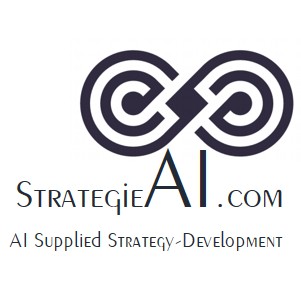A new way of thinking about the viability of companies
Thinking in strategically relevant markets (SRM)
SRM encompasses the entire process of fulfilling a specific original customer benefit. This approach goes far beyond industry boundaries defined by providers. Starting from the original customer need, it includes all those factors in the analysis and consideration area that cannot be ignored in the sense of a sine qua non without losing decisive strategic aspects in the direction of the future viability of a company in a blind spot by avoiding disruptions, substitutions or fundamental changes.
Changes in the playing field due to digitalization or climate change, the ageing of the human race would not even be in focus. Anyone who still thinks in terms of sectors, sales or product markets has already lost.
The most important target parameter here is the viability of a company in its relevant system beyond its market.
The viability of a company as the decisive target figure in theory and practice
Viability is the relationship between complexity and the product of agility, robustness and resilience!
The greater the complexity and the lower the agility x robustness x resilience of a system, the greater the risks for the controllability and viability of a company. A system is complex if the information quality of the interdependencies between its system parameters contains the capacity for surprises and unexpected behavior and cannot be logically planned in a linear fashion. Complexity always involves uncertainty and difficulty in forecasting, which increases with the number of variables influencing the relationship or the system and their variety of effects, even to the point of chaos. The predictability of the behavior of system factors and their relationships decreases with increasing complexity.
The less the possibility of clearly determining behavioral scenarios and their possible effects, the greater the risks of a relationship or system. Complexity and risk are therefore also closely linked.
New logic
The aspects and findings discussed require the following parameters for positioning and managing the success of a company in the current situation:
1. determining the relevant SRM and the relative importance or market position of the company within it. It is not enough to simply determine the market share quantitatively; depending on the company and environment, the importance of a company in SRM is measured using a mix of qualitative and quantitative parameters. From the perspective of SRM, there are also "niches", specialists and global players, which vary in size and relative importance depending on their positioning and are more or less successful depending on how they manage to find a strong position and translate this into results.
2. profitability can no longer be based on an industry or sales market, but on the relevant environment in the new attention competition. It is possible that the benchmark here is offers that at first glance do not provide the same services, but can satisfy the original customer need in a different way in the same or even better way.
3. ultimately, the most important parameter for future viability is the viability of the company in the relevant system environment.
For each system environment
- the individual-relevant parameters that characterize it, the DNA of a system, and
- these are made quantitatively measurable,
- so that we can then use our AI tools to analyze and interpret their interdependencies and effects on the system, the SRM, etc.
The Schließmann Strategy Cube maps this logic in three dimensions by working out the individually relevant parameters of each system environment, making them quantitatively measurable and using AI tools to analyze and interpret their interdependencies and modes of action.

Figure: Schließmann strategy cube(based on Michael Porter) © 2018-2024
The individual items can basically be characterized as follows:
- CC is the least favorable position with weak SRM significance, below-average profitability and low viability. Companies that are positioned there have usually stood idly by and watched a negative development for a long time or have simply been unwilling or unable to recognize it. Only rarely can a successful future be shaped from such a position in the relevant environment, as the resources for a necessary fundamental change are lacking. In most cases, the development of SRM has also been literally overslept. If still possible, an orderly withdrawal from the market and possibly a new start in a different SRM system environment with resources that are still suitable and usable makes sense.
- AC and BC are positions that indicate that the company has done something right in the past and is currently profitable and strongly positioned in its environment. Latent or already visible through initial symptoms (iceberg principle), however, it is apparent that the company is not very robust in the face of crises and setbacks, i.e. it may have concentrated purely on forward strategies and also has few innovative answers for the future. Depending on their behavior and the innovation substitution attack from the relevant environment, companies positioned in this way are quickly a case for a crash to CC. In most cases, these companies need a new answer for the future and have to reinvent, reposition and reorganize themselves, especially in terms of personnel and mindset.
- The above assessments apply analogously to CB, whereby the better Z-axis position of such companies usually results in better robustness. Patents, a larger war chest or (temporarily) monopolistically protected market relationships are examples of characteristics that give a company relative staying power, even though it is already strategically comatose and is only resting "between the stools" on past results. Here, too, a retreat and reorientation are usually advisable.
- The same applies to AB and BB as to AC/BC, but the latent risks are lower and the chance of a turnaround towards sustainability is higher, even with the existing team, thanks to a change of perspective and reinvention.
- CA indicates a rather short-term strategic change that has brought the company into a "valley of tears". The merger of major competitors to form a new market power, a new technology, digitalization, social upheaval and environmental changes are all exemplary causes. However, the company has the potential to weather the crisis robustly and reshape itself in an agile manner.
- The AA and BA positions ultimately represent an optimum strategic starting position and future opportunity for a company when all the parameters of the model are combined. These are the target positions of sustainably viable companies in the race for the future.
(from: Schließmann, Die neue Dimension strategischen Denkens, in: Kaltenbrunner/Urnik (eds.), Unternehmensführung State of the art und Entwicklungsperspektiven, Oldenbourg-Verlag; With the "Strategy Cube", Christoph Schließmann published a corporate management model in 2012 in his contribution "Die neue Dimension strategischen Denkens" to the commemorative publication "Unternehmensführung: State of the art und Entwicklungsperspektiven", which is based on Michael Porter's U-curve and develops it further by including the factor "systemic viability").

